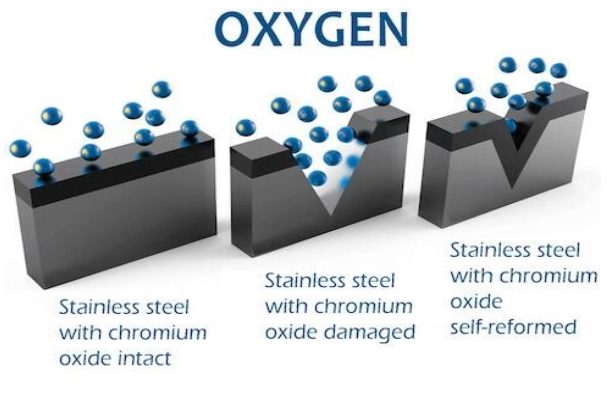Latest News
Properties of stainless steel
Stainless steel is the universal term for an alloy of Iron which contains a minimum of 10.5% of Chromium.
Its properties are further enhanced with other elements such as Molybdenum, Nickel and Carbon to produce a range of different grades. One of the exceptional features of this metal, is that it 100% recyclable, making it environment friendly and a key player in the sustainable steel world.
All steels have the basic iron and carbon composition, but the term stainless steel refers to a wide range of steel alloys with a minimum of 10.5% chromium content by mass. These alloys are produced primarily for resistance to corrosion or oxidation, which happens when metals react with oxygen (in water or air) and rust.
Chromium (Cr) is a hard metal which reacts with oxygen when exposed to water or air. In stainless steel, the chromium oxide creates a very thin stable surface film, which protects the metal from corrosion by limiting the oxygen’s access to the rest of the metal. This process, which results in resistance to corrosion, is called passivation. The stable film formed on the stainless steel is self-repairing in case it is scratched or temporarily disturbed by an upset environment. The image below shows how the chromium layer (dark black) protects the rest of the alloy from oxidation, even when damaged.
